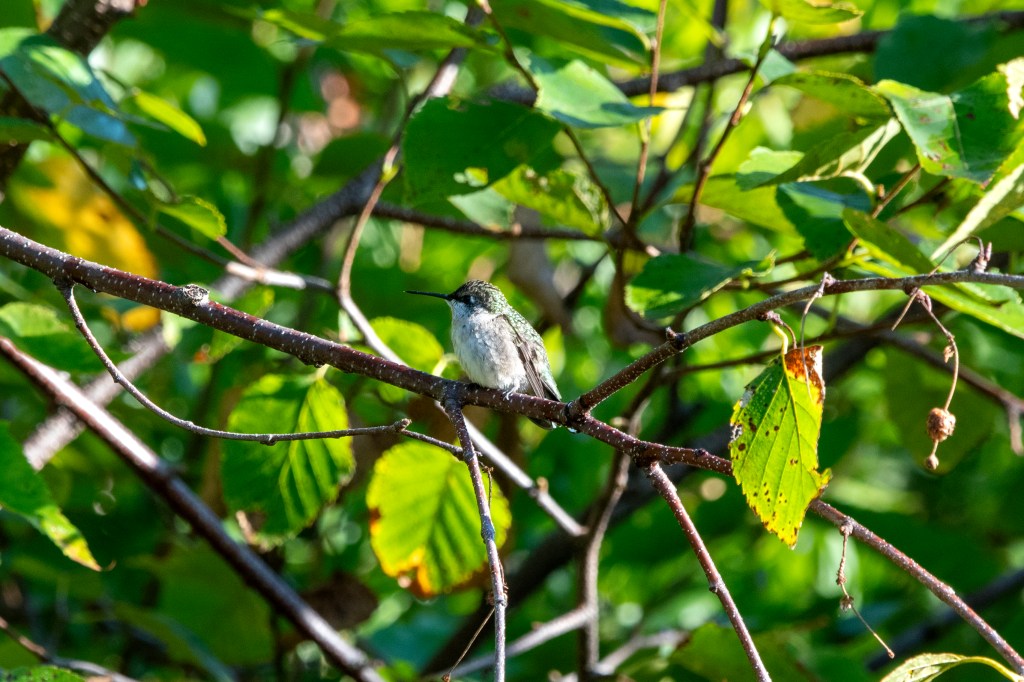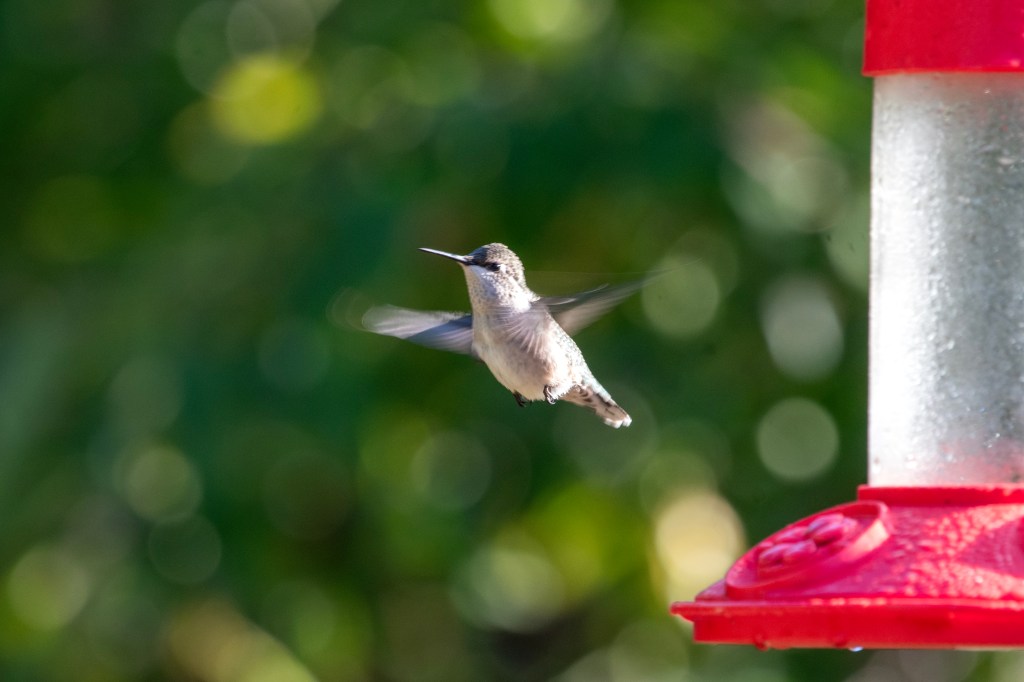
Heading into October every year, I have one message to get across: Leave your hummingbird feeders up. Longtime readers have heard me beat this drum and hopefully still have their feeders up, but we are heading into the exciting time of year for migrating birds, when we tend to see more western species show up in the east. We often refer to these birds as vagrants, lost migrants that have gotten off course, but for some species, we are seeing shifts in migratory patterns and early range expansions.
To take a step back, in eastern North America we typically only have one species of hummingbird, the ruby-throated hummingbird. These are a migratory species that arrive in Maine each spring – typically around Mother’s Day, early to mid May – then spend the summer nesting across the state. Most ruby-throated hummingbirds depart during the month of September, though we do get reports of small numbers lingering into October and many fewer in November. In 2016, there was one that lingered in a South Portland yard until mid-December, making it Maine’s only record of a ruby-throated hummingbird during a Christmas Bird Count. Interestingly, that bird was found foraging on pineapple sage (Salvia elegans), a non-native species in Maine, but one that it would probably be feeding on in Mexico at that time.
Aside from the well-known ruby-throated hummingbirds, we now need to be on the lookout for western Selasphorus hummingbirds. This genus of hummingbirds primarily occur (in North America) from the Rockies west to the Pacific, and north into Alaska. On their southward migration, we are increasingly detecting these birds in the east, largely thanks to feeders they visit. In the last few decades, rufous hummingbirds have been overwintering in the southeastern United States, while historically they would travel farther south into southwestern Mexico. Birds that winter farther north are more likely to reach their breeding grounds earlier in the spring, likely occupying better territories and having higher reproductive success, and passing on their genes that perhaps made that choice to winter farther east to begin with.
Researchers have been banding many of these individuals, putting small metal bands with unique identifiers on their legs so those birds can be identified if seen at another place or time, and showing that these birds are being successful and returning to the east in multiple years. We now have at least 30 records of Selasphorus hummingbirds in Maine, including an adult female rufous hummingbird that was banded in Dayton in 2022 that was visiting feeders from Oct. 22 through Nov. 14. In 2024, another adult female rufous hummingbird was banded in Port Clyde, first discovered on Oct. 31 and lingering until Dec. 2. Many vagrants are immature males, thought to be prospecting, but recent rufous records definitely buck that trend. Speaking of young males, a hatch-year (born that year) broad-tailed hummingbird was discovered in Freeport in November 2022, the first time one had ever been seen in New England.

Maine has two records of calliope hummingbirds, both originally discovered in October (Oct. 6 and Oct. 23), but it has been 17 years since the last sighting. We are yet to have an Allen’s hummingbird identified here, which would be the next expected species of hummingbird for the state, so maybe this year (and your feeder) could be the fall for something extra exciting.
Each record helps us learn more about the shifting patterns of these birds. It can be difficult to determine anything from single sightings, but collecting these records and information about each individual helps form patterns to track.
As a reminder, the proper hummingbird food is a simple 4-to-1 ratio of water to plain white sugar. Do not use red dyes, and sugar alternatives (like honey, and raw or brown sugar) contain levels of iron that can be lethal. Go get those feeders refilled and let us know if you have any visitors. It’s very hard to accurately identify these vagrants in their various fall plumages. If you see any hummingbirds this fall, take the best photos you can, and please let us know at [email protected].
Have you got a nature or wildlife question of your own? It doesn’t have to be about birds! Email questions to [email protected] and visitwww.maineaudubon.org to learn more about birding, native plants, and programs and events focusing on Maine wildlife and habitat. Maine Audubon Staff Naturalist Doug Hitchcox and other naturalists lead free bird walks on Thursday mornings starting at 7 am, at Maine Audubon’s Gilsland Farm Audubon Sanctuary in Falmouth.